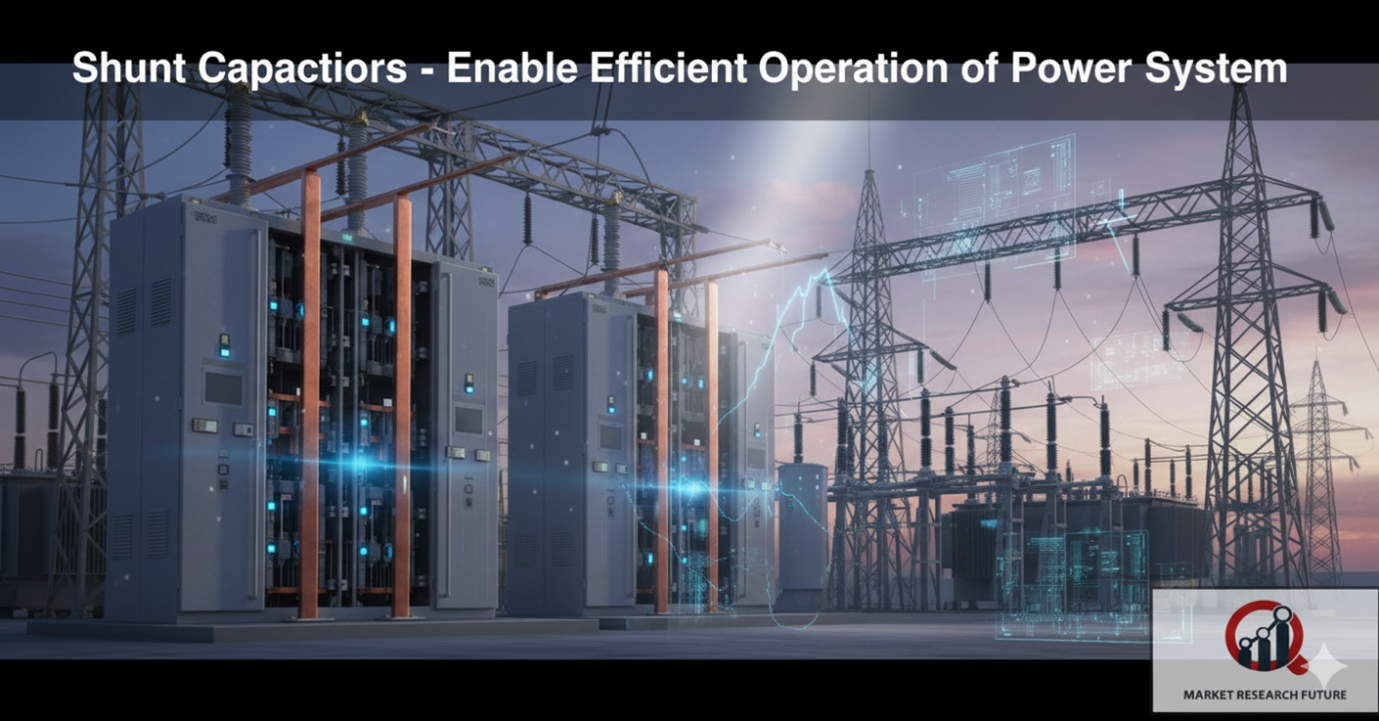
Shunt Capacitors Market Overview
A shunt capacitor is a device that makes the power supply better and helps the power system run more smoothly. The main reason for installing shunt capacitors is to provide capacitive reactive compensation or correct the power factor. It is also known as a capacitor for correcting the power factor. The shunt capacitors are becoming more popular because they are cheap, easy to install, and can be used anywhere in the power network.
Many companies, especially in Europe and the Asia Pacific region, have their own manufacturing plants. Other companies, on the other hand, hire other companies to do their manufacturing. Asia Pacific is one of the fastest-growing markets, so businesses are taking advantage of the chance to grow their operations in this area. There are also other small and medium-sized businesses that can make money in the local markets. ABB Ltd. (U.S.), Schneider Electric (France), General Electric Company (U.S.), and Siemens AG (Germany) are known as the world's top companies for making a wide range of shunt capacitor products.
Power use is going up all over the world.
The economy and population have both grown quickly, which has led to more power use. As countries grow and people's quality of life gets better, they use more energy. As the economy grows, so will the need for better housing. This will also mean that more energy will be needed for building. So, to meet the growing demand for power and connect different grids, many countries around the world are expanding and upgrading their electric grid infrastructure. The World Bank says that the use of electricity has been steadily rising. The amount of electricity used per person in 2014 was 3,144.4 kWh, which is more than the 2,956.6 kWh used in 2010.
Future Trends in the T&D Network
Many of the world's biggest economies are working hard to improve renewable energy power generation. This will help them rely less on fossil fuels for power generation. Renewable energy now makes up a large part of the world's total energy production. Because renewable energy grows so quickly each year, there needs to be a strong transmission and distribution network. Europe is building a grid that connects all of its countries so that electricity can flow between them. For example, electricity can flow between the UK, Germany, Poland, France, and Sweden. Some of the benefits of these kinds of interconnected systems are that they make the grid more reliable, combine reserves, and cut down on the amount of money needed to build more power-generating capacity.
In the U.S., the demand for electricity is rising, and the transmission grid has not been invested in enough over the years. This has led to a backlog of requests for new infrastructure. Also, the government is working on specific projects to improve the current T&D grid, and there are more and more sources of renewable energy, like wind and solar, that need more T&D investment.
The law on the Expansion of Energy Lines in Germany made it easier to get permits for new power lines in 2009. This slowly led to more money being spent on the power grid and new transmission lines. The introduction of the Grid Development Plan and the Federal Requirements Plan Act sped up this process a lot. These plans included the most important grid extensions for the next ten years.
As more private companies get involved in India's power generation, transmission, and distribution sectors, the domestic electrical equipment (EE) industry is growing quickly and becoming stronger and healthier. The Indian government is expected to spend 6.39 lakh crore on generation, 1.80 lakh crore on transmission, and 3.06 lakh crore on distribution during the 12th Five-Year Plan period.
The European Investment Bank (EIB) recently gave Red Eléctrica de España a loan of USD 477 million (Euro 450 million) to help it build and improve its electrical transmission network in Spain. There will be a new high-voltage power line going from Asturias to Galicia in the north and another going from Extremadura to Andalusia in the south.
Growth strategy for expansion
A lot of research in this market has shown that expansion is a key strategy used by companies with a market share of more than 75% to reach more customers and make their operations more efficient. The new Capacitor and Instrument Transformer Advanced Manufacturing Facility opened in Clearwater, Florida, by General Electric Company, not too long ago. The business spent $60 million on the building, where they will make capacitors and instrument transformers for the world market. The factory has created 275 new jobs in the Tampa Bay area. It trains its workers to use the newest technologies and digital platforms.
One of the main strategies used by the biggest companies in the global shunt capacitor market is to come up with new products. Many businesses use this strategy to give customers more options. Aerovox Corp. has recently made a line of tough and long-lasting power factor correction capacitors (PFCs) that work at 50 Hz. Using PFC capacitors in factories or other industrial settings can save a lot of money and make equipment last longer.